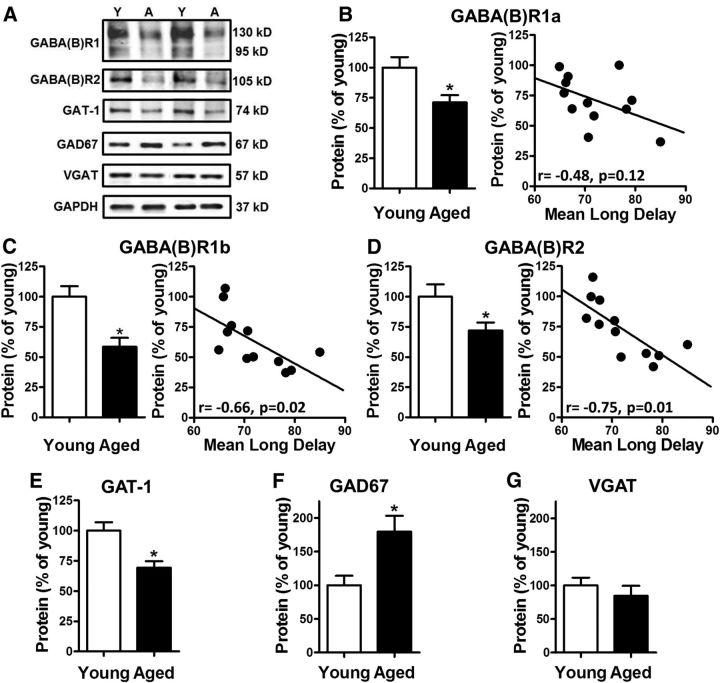Figure 2.
Age-related changes in GABAergic signaling protein expression and relationship with working memory ability. A, Representative immunoreactive bands from young (n = 6) and aged (n = 12) mPFC homogenates following incubation with antibodies to the GABA(B)R subunits R1 and R2, the GABA transporter GAT-1, the GABA synthesizing enzyme GAD67, the vesicular GABA transporter VGAT and loading control GAPDH. B, In the aged mPFC, GABA(B)R1a expression was significantly reduced compared with young; however, as shown in the scatter plot of individual aged rats, there was no significant relationship between GABA(B)R1a expression and delayed response performance. C, Expression of GABA(B)R1b was significantly reduced in aged mPFC compared with young. The scatter plot of individual aged rats shows that, in contrast to GABA(B)R1a, GABA(B) R1b expression was significantly and inversely associated with delayed response performance such that lower expression was associated with better working memory ability. D, GABA(B)R2 expression was also significantly reduced in aged mPFC compared with young. Like the R1b isoform, the scatter plot of protein expression of individual aged rats shows that GABA(B)R2 expression in the mPFC is significantly and inversely related to working memory performance such that those aged rats with the lowest levels of GABA(B)R2 exhibited better working memory. E, Expression of GAT-1 was significantly decreased in aged mPFC compared with young. F, In contrast to all other signaling proteins examined, expression of GAD67, was significantly elevated in aged mPFC compared with young. Neither GAT-1 nor GAD67 expression in mPFC was reliably related to working memory performance. G, Notably, expression of VGAT did not differ between young and aged mPFC, suggesting that aging does not produce a robust loss of inhibitory terminals in this brain region. Error bars represent ± SEM. See Results for statistical analyses. Asterisks indicate significant differences (p < 0.05).

